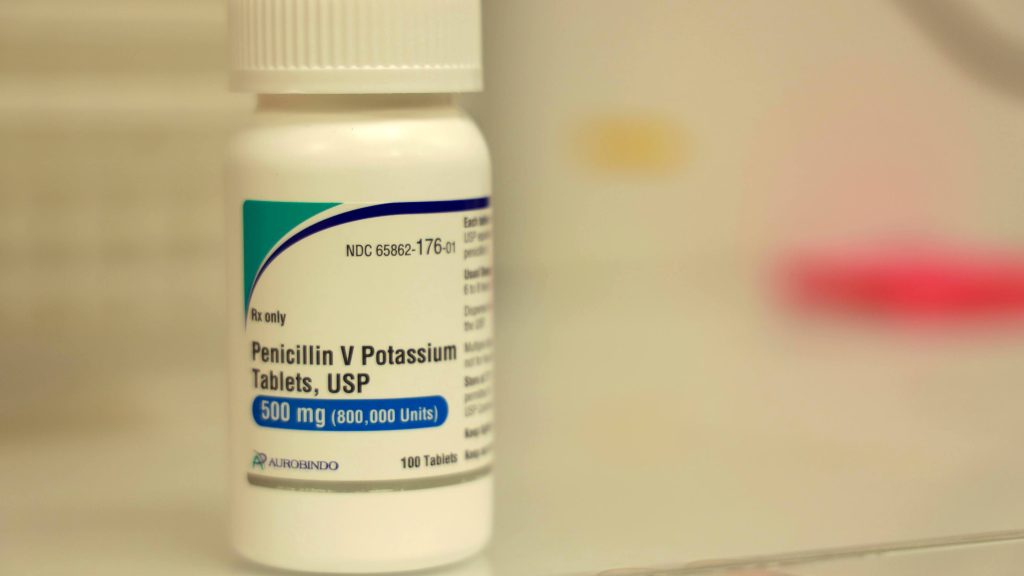-
Mayo Clinic Q and A: Penicillin allergy or not? Why you should find out

DEAR MAYO CLINIC: As a kid, I remember having a rash after taking penicillin. To this day, my doctor prescribes something other than penicillin if needed when I am ill. I have heard that people who think they are allergic to penicillin may not be. Should I check whether I truly am allergic?
ANSWER: Penicillin refers to two things. One is a specific antibiotic prescribed to treat some common illnesses. Penicillin also refers to a family of antibiotics. People may be familiar with other antibiotics in that family, like amoxicillin, which is closely related to penicillin the antibiotic. Penicillins are some of the most prescribed antibiotics.
One out of 10 people in the U.S. thinks they have a penicillin allergy. In reality, more than 90% of these people could safely take the medication.
It's important to know whether you or your child are truly allergic to penicillin. If you have a penicillin allergy label in your chart and you get an infection, your healthcare professional must prescribe a second- or third-choice antibiotic to treat the infection.
For example, the most common treatments for strep throat, ear infections or pneumonia are penicillin or another antibiotic in that family. If your chart says you're allergic, doctors look for other antibiotics to treat those infections. Other antibiotics may not be as effective as a penicillin. Studies have shown that people with a penicillin allergy label are more likely to develop infections after surgery, develop infections with antibiotic-resistant bacteria, and develop complications such as diarrhea from a Clostridioides difficile, also called C. diff, infection.
Other antibiotics generally have more toxicities or side effects. They may be harder on your liver or kidneys. They may cause diarrhea, skin rash or abdominal pain. Lastly, other antibiotics are generally more expensive than penicillin or a penicillin family antibiotic.
Misuse or overuse of any antibiotic can lead to antibiotic resistance, which is a public health concern.
People think they are allergic to penicillin for many reasons. It's common for children to get labeled as allergic to penicillin, but as adults, they don't recall what happened when they got the penicillin so they continue to avoid it "just in case."
Unfortunately, even though antibiotics do not kill viruses, antibiotics sometimes are prescribed for people with viral illnesses. Viruses can cause symptoms such as rashes, vomiting and diarrhea. If you are taking an antibiotic at the same time, virus symptoms may be incorrectly attributed to the antibiotic.
People may misinterpret symptoms. One symptom of a true allergic reaction can be a rash called hives — an itchy, raised rash. But other types of rashes, like flat red rashes, are common with viral infections. These may be mistakenly attributed to a drug allergy when they were caused by something else.
People also mistake known antibiotic side effects for symptoms of an allergic reaction. Unfortunately, antibiotics quite commonly can cause abdominal pain, diarrhea and vomiting. These are side effects and not an allergic reaction. While unpleasant, they do not mean that you can never have that antibiotic again — especially if it is the best treatment for the infection.
Once an allergy label is on their chart, people tend not to question it, carrying it through their lifespan.
For those truly allergic to penicillin, in five years, about half will outgrow that allergy. By 10 years, about 80% of people will outgrow that allergy.
To find out if you are allergic to penicillin, you should talk to your primary care clinician to:
- Review your medical history. If your reaction was only diarrhea, for example, the allergy label likely can be removed without testing.
- Consider an oral challenge. If you had a reaction many years ago, depending on what happened, your healthcare professional may suggest an oral challenge. You receive a dose of an antibiotic, like amoxicillin, and are observed for a period of time. Sometimes a small dose is given first, followed by a larger dose if you do not have a reaction. If you remain symptom-free, that allergy may be removed from your chart.
- Consider skin testing. If it is possible that you had a serious reaction in the past, skin testing may be recommended before an oral challenge. A small amount of antibiotic is placed under the skin and observed to see if there is a skin reaction. If that test is negative, you might proceed with an oral challenge or taking a dose of antibiotic to see if there's any reaction. If the oral challenge does not cause a reaction, then the allergy can be removed from your chart.
— Nipunie Rajapakse, M.D., Pediatric Infectious Diseases, Mayo Clinic, Rochester, Minnesota
Related Articles







